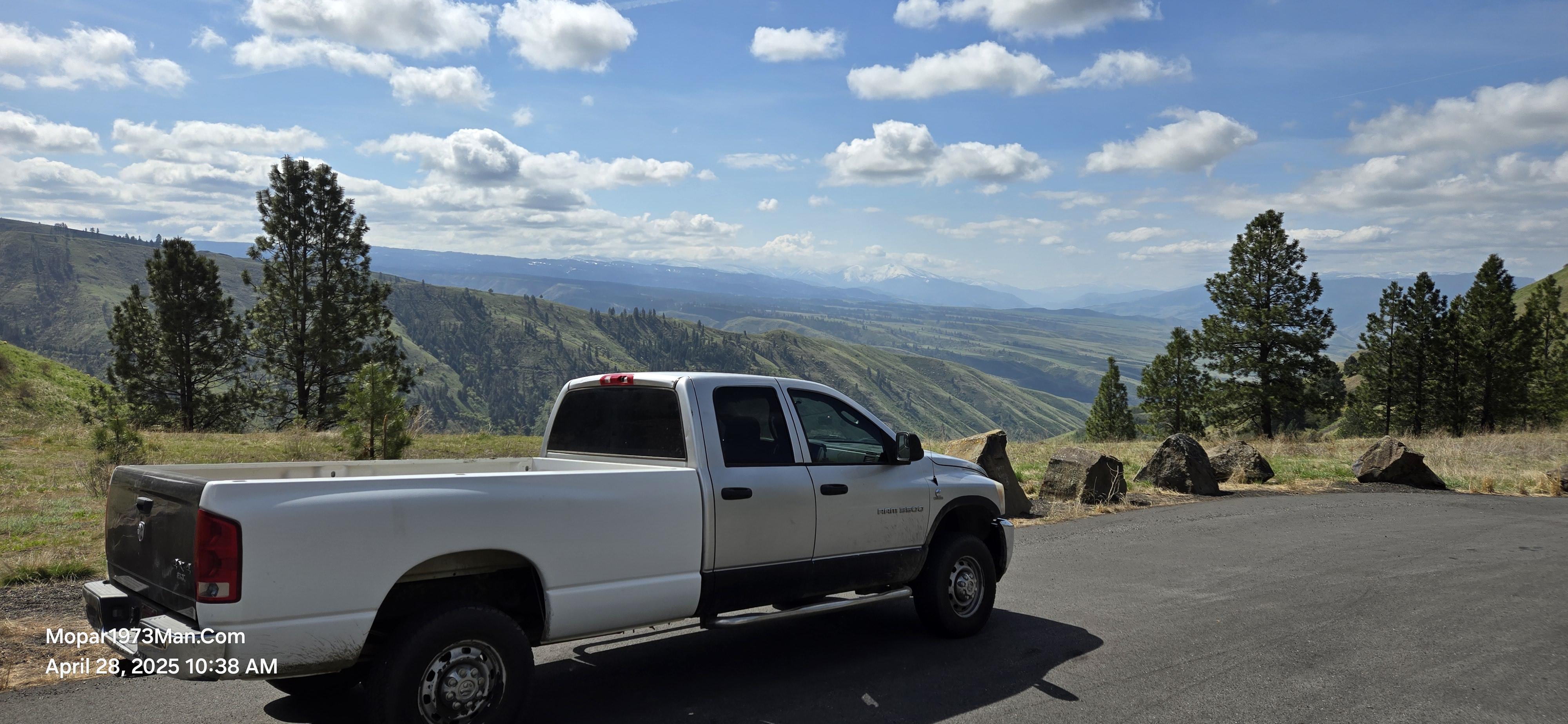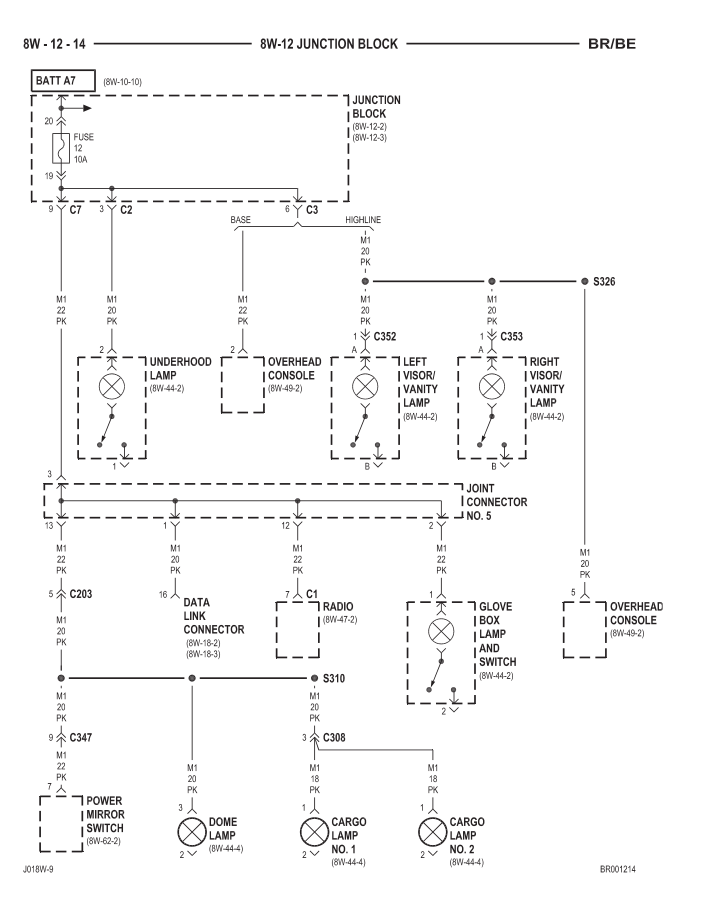
Everything posted by Mopar1973Man
-
What makes 24 valves sound different from each other?
No. The ECM assumes it still stock 235 HP injectors. This is why timing needs adjustment. The only thing that will advance timing is to have an excessive cold temperature for IAT sensor. Like I said when it's below +80*F the ECM jacks in another 4 degrees of advancement. When the IAT rises then the timing retards again. Like @pepsi71ocean told me about setting his injectors doe 320 bar really made a difference. This also changes the timing a bit too as you increase pop pressure it just slightly later than the injector fires but with bigger nozzles the quantity of fuel will flow faster into the cylinder versus stock nozzles.
-
No Start
I've got a full write up on it...
-
VP44 testing
No don't bother. Just unplug the switch part and send it back to @Me78569. Nick got the parts pile and can solder in a new switch and just send it back to you. Just a few day both ways for mail. Stuff the switch in a flat rate mailer.
-
VP44 testing
Could you get a picture of your High Idle Switch so we can see possibly what is broken? This why we built these on PCB because that makes it possible for us to replace the broken parts like switches fairly easy. Compared to the old Ed Grafton design which made it nearly impossible to repair. This way we can get your switch functional again at least that would help out in the MPG's.
-
VP44 testing
If I want to do that all I got to do is get a tank of the B15 Biodiesel in Oregon and I could do that really easy. For some reason, Idaho petroleum diesel is treated very well for cloud point and pour point. Still to this day 356k miles and not used one anti-gel product nor had it gelled or freeze up. I'll admit I've seen lots of local kids with Daddy's Diesel truck and stealing a bit of the red dye from the ranch and end up gelled up on the highway. I've also seen the same thing where the fuel was froze up from the excessive amount of water. I've seen even a FASS 150 pump blowing fuses because the pump was a block of ice and so was the straw couldn't blow air into the tank. Most of this I see from long-term storage of fuel and trying to use the wrong grade of fuel at the wrong time. Just being too CHEAP and fussing over 2 to 5 cents for cheap fuel where the fuel station does NOT use water blocking filters. Yeah, I've done my homework and know which stations NOT to buy diesel from period.
-
No Start
If you can't get it started using the BC hot wire method the VP44 is done. Just wanted to be clear about what it takes to start sometimes being that some people might be giving up too easy and buying another VP44 and really didn't need it.
-
Electrical Help - Power Mirrors and Dome Light
Now, this problem is gone. Not solved though. This morning the mirrors started working again and so did the dome light. Still never found the G304 ground. Something I've wiggled or push on made things work again.
-
Electrical Help - Power Mirrors and Dome Light
Bulb is good. I can't really test the mirrors unless I pull the doors apart. It's a power issue for sure. Fuse is good. I've tested to C302 and there is power to that point. I'm starting to think its a bad ground but still can't find any documentation on G304 ground even the FSM doesn't list anything. My wiring diagrams here show the rear of the cab near the rear speaker. I've got to put back together my dash now that I know everything to that point is good.
-
2001 2500 24valve steering
All I can say is pull the shaft back and inspect the splines on both the steering shaft and the input shaft of the gearbox.
-
2001 2500 24valve steering
Input shaft...
-
VP44 testing
That wasn't a very good idea... That is going to bring even more cold air to the engine.
-
VP44 testing
...and they say "Cold Air Intakes" are good for performance. Anything under 80*F IAT is too cold. The other problem that most don't think about is the local fuel have already start switching over to 45 and 50 cetane with lower cloud points. This will make the matter worse because with the enhanced ignition quality of the fuel and the enhanced timing stack on the ECM blindly will make for huge reduction in MPG which most start seeing a 2-4 MPG drop because of this problem. Optimally you want to get your IAT back above 80*F in real temp not fooled for the best performance. This is where the winter fronts come in covering the grill and prevent cold air from blowing on the intercooler. This will help with keeping the IAT temperature up. This is a diesel engine you need heat to make the fuel go BANG! This is where the BHAF shines the best because it is drawing the warmth of the engine what little there is. Another factor is don't use any extra cetane or anti-gel if you can avoid it. cetane booster and anti-gel products will reduce the BTU's of the fuel, even more, reducing the MPG even lower. Excessive use of anti-gels can cause VP44 damage because you are stripping away the lubricity with more solvent to cut the waxes in the fuel. Most are based on Xylene or Kerosene for pour point depressants. Again you want to avoid using if at all possible. Myself I've never used any of these products and never gelled up once yet. High cetane means lower BTU's. This is what my local fuels look like. The problem is that the ECM cannot measure the cetane level of the fuel at all. This is a factor that is not considered and is the best problem of why the MPG drop in winter time. Quadzilla is the ultimate answer. Being you can build your entire timing table around the cetane of the fuel and your current IAT to give the best possible MPG still which will still surpass the MPG switch because it locked the IAT at 143*F. Even with temps falling here into the teens I'm still touching 19 MPG with no big issues.
-
Help out a fellow forum member
No Internet access allowed. No electronics. No cellphones, no tablets, no laptops allowed. Again no internet... This is why he's requesting books, catalogs anything to do with Dodge diesels and Ford diesels.
-
VP44 testing
What's broken on it? If it the switch part get a hold of @Me78569 he'll work with you. If its the cable part I can handle that part.
-
Help out a fellow forum member
I just sent out an LMC truck Catalog to him. http://www.lmctruck.com/freetruckpartscatalog/
-
VP44 testing
No. The only way to test a VP44 is have it sent in and ran 3 hours on the test stand which come typically at the cost of about half a VP44 replacement. (400 to 500 dollars) Typical high timing ECM software. Once the IAT drops below 80*F the ECM stacks on another 4 degrees of timing and runs at about 20-21* BTDC which is typically too high of timing. Hence there is where my MPG mode on my high idle switch is good for because it fools the IAT to showing 143*F and the timing is retarded back down to normal range again giving back performance. Another way is to just get a Quadzilla and set the Warm Up mode for 140*F or so to get it kicked into the timing mode soon and then you can control the timing directly. Yeah, I see the very thing you do too. Morning here at the house is 25*F but in New Meadows proper its only 16*F right now. https://lb.511.idaho.gov/idlb/rwisstations/rwisstation.jsf?id=9&view=state&text=m&textOnly=false
-
2001 2500 24valve steering
Verify the bearing on the brace is still tight and not wallowed out. 33-inch tires will help but not quite fix the problem it will continue. 285/75 R16 people barely get away with that size and still have steering box failures. Like lot of the rancher here locally like that size because it gives some floatation to offroad mud conditions but still it kills the steering box rather quickly. Like myself with the 235/85 for over 340k miles when I pull my box yo have it re-sealed but I F'ed up the input cap because it was rusted badly. I sent the enitre mess to Ryan at BlueTop and he sent me a complete steering box which was upgraded for quick ratio. Now I did look inside the box and mine was absolutely fine all the gears everything was perfect barely any wear. What killed my box was Idaho road salt rusted the input shaft just enough that the input seal was leaking fluid. Blue top's page here and contact info. https://mopar1973man.com/forum/195-blue-top-steering-gear/
-
2001 2500 24valve steering
35's you need to have the steering brace for the output shaft. The steering box can't handle anything larger than 265's in design. This is the reason I've never had this issue I ran 235/85 R16 (31-inch tires) for years now switch to 245/75 R16 (30-inch tires) and even better. Also, make sure you not running a Quick Ratio steering box if so make sure to change it out for a standard ratio box. This will reduce the stress on the steering box. Like myself, I have upgraded to "quick ratio" because I went smaller in tire size and don't have the steering stress. Smaller the tire the better the steering performance! Yeah, Big tires look cool but come at a huge cost!
-
2001 2500 24valve steering
Never had such problems. I've got to ask what size tire and wheel are you running? This is the main cause of poor steering performance. Steel. I would have to say contact Blue Top Steering he's a vendor on the website. You can buy just a rebuild kit from him and rebuild your box. I'm going to ask if you ever changed your power steering fluid? What is the color of the fluid? I'm going to bet if you have not change the fluid the box is full of sludge and will need cleaning out. There is a sector adjustment for taking up slack in the gearing on the top of the box is a jamb nut and Allen bolt. This is what adjust the free play between the piston rack and the output shaft. The only reason this would be loose is because the power steering fluid is old and broke down and wear has started in the box so the gear teeth are worn.
-
No Start
Remember even a good injection pump takes quite a bit to get started. The other part is you need +4,500 PSI from the injection lines to make it even run. If the fuel is not coming out with force then your not pumping. Like when I did my head gasket. The truck was down for over a week with everything disconnected. Now reassemble everything and prime the low pressure. I cranked on it till I wiped out the batteries. Since I only got a 2A battery charger I had to wait 24 hours for a good charge to try again. So 24 hours later... I crack 1, 3, and 4 again. Go fuel spraying from those. Close those 3 back up. Then got it started on those 3 barely. I was still holding the starter and the 3 cylinder popping barely. Took a good bit until the rest were capable of pushing the air out. I've seen times where I could not get it to even start at all. Ended up disconnecting the grid heater and have a friend shoot a very tiny blast of starting fluid at the turbo to help get the engine to bust over. I knew the VP44 was good and there was fuel but just could get it to pop or ignite. If you use starting fluid you want to make sure the grid heaters are disabled. Then instruct who is going to shot the starting fluid only a very tiny blast of it. WARNING! - DO NOT overuse starting fluid it will break piston ring and do cylinder damage! In all cases, I've got it started again. You have to remember you RPM speed to get enough compression to ignite the fuel. Then you need enough pressure at the injector to make it spray the fuel (+4,500 PSI). If your missing one or both you not going to start that engine. NOTE - If you have error codes for the injection pump already you already have a smoking gun pointing to a VP44 failure. All the Blue Chip test is for to verify the ECM is not the cause. The hot wire test makes the VP44 a standalone pump and should start and just idle.
-
Anyway to test block heater parts
Typically the cord fails.
-
Fuel leak
You sensor is dead most likely. This is a reason I remote mounted my fuel pressure sensor now I can easily hook up mechanical gauge and verify. In you case you need a snubber distance from your tap point about 5 to 6 feet and fresh pressure sensor. You can start the engine and place your finger on the line and feel the pulsation from the VP44. All the stock plumbing needs to go away. This was learned back 2004 when drilling banjos barely made the grade. Then Vulcan Performance came out with the first Big Line Kit. Then AirDog and FASS started using the idea as well. 1/2 lines gives the supply volume plus more. Best way to see this your house is on fire and you trying to fight with you little 5/8 inch garden hose. Your losing the battle. The fire dept shows up deploys an 2 1/2 inch cannon. This thing will drown any fire. Same thing with you fuel system that tiny 6mm ID lines is smaller than 1/4 inch ID. Once you upgrade to full 1/2 lines you will stable fuel pressures I only see roughly 2 to 3 PSI drop from idle to WOT.
-
Anyway to test block heater parts
Put a ohm meter to the prongs of the plug it should show like 20 ohms if I remember correctly. If shows infinite then remove the cord from the block heater and then ohm test the element if you show 20 ohms or so then the element is good and the cord is damaged. If it shows infinite then the element is burnt out and requires replacement. I would buy both together if you get an element. The element is 750 watts, 6.25 Amp load at 120 Volts AC which makes it 19.2 Ohm element.
-
What makes 24 valves sound different from each other?
If you over advance the timing yes it makes it louder. But if you hit that happy medium where the engine load is lowest and the timing is advanced them you gain both worlds.
-
Electrical Help - Power Mirrors and Dome Light
Ok gang... I've got a good one. My interior light in the center of the cab is out and so is my power mirrors. Now everyone is going to jump and say to check fuses. Been there and done that the IOD fuse for that circuit is fine because the glovebox light and the overhead console (map lights) and cargo bed lights work. When I pulled C203 all the light went out. So power is good to that point. Now I'm trying to find S310 but the FSM lists S310 as N/S (not seen). What is weird the Cargo light in the top of the cab work. So the only thing I can figure is the S310 splice has broke loose and dropped the dome light and the power mirror on me. Is it possible there is this G304 in the lower rear of the cab. I''ve can find nothing on G304 ground in the FSM at all. Another view... This is for the dome light. For the power mirrors





